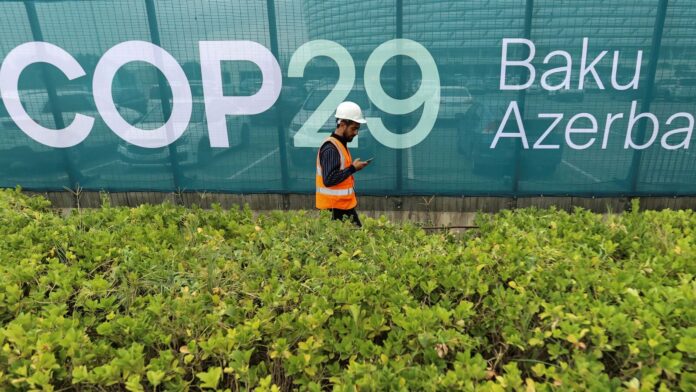Vulnerable populations, primarily in developing countries, bear a disproportionate burden through financial mechanisms largely reliant on loans rather than grants. The report calls for developed nations to close this financial gap and support technological and capacity-building initiatives for climate resilience.
Against this backdrop, CoP-29, underway in Baku, is pivotal. Following the establishment of the Loss and Damage (L&D) Fund at CoP-28, global attention has turned toward the operationalisation of the fund. Created to aid vulnerable countries facing the devastating impacts of climate change, the L&D Fund is essential for mitigating damages and aiding recovery.
According to the 2022 report of the Intergovernmental Panel on Climate Change (IPCC), “Loss and damage finance needs are closely connected to our ability to mitigate and adapt to climate change.”
This fund is a vital lifeline with an initial allocation of $300 billion for developing nations. However, the challenge lies in its timely and equitable deployment, necessitating immediate international cooperation and robust domestic frameworks.
A heavy burden on the Global South: The toll of climate-induced disasters disproportionately affects developing nations, with higher fatalities and economic losses compared to the developed world.
For these nations, post-disaster recovery strains already fragile economies, emphasising the necessity of the L&D Fund. Preliminary contributions of approximately $661million signal a vital start, but the fund’s long-term efficacy depends on scalable, sustainable financial mechanisms.
Developing countries remain firm in their demand that the fund respects the principle of “common but differentiated responsibilities.”
Developed nations’ Faustian-bargain attempts to dilute accountability or exert undue influence over fund allocation have faced united opposition from blocs like G77 + China. It is critical that the fund operates independently and remains a tool for genuine support, not a vehicle for geopolitical leverage.
India’s role and readiness: India, one of the most climate-vulnerable nations, stands to benefit significantly from the L&D Fund. Facing frequent climate extremes like heatwaves, India endures severe economic and social impacts.
Beyond its vulnerability, India has emerged as a critical advocate for climate equity. As a leader in initiatives such as the Coalition for Disaster Resilient Infrastructure and the International Solar Alliance, India’s efforts underscore the necessity of channelling L&D resources into sustainable and energy-efficient projects.
India’s Nationally Determined Contributions (NDCs), including the ambitious goal of achieving net-zero emissions by 2070, demand substantial financial and technological resources. However, limited domestic investments constrain progress.
The L&D Fund presents an opportunity to bridge this gap, provided India develops a robust domestic framework to utilize such resources efficiently.
Operationalising the L&D Fund requires India to take the decisive step of streamlining its fragmented climate policies into a unified strategy is essential. A coherent framework would ensure clarity in channelling international resources to critical areas such as disaster recovery, infrastructure resilience and environmental restoration.
For example, programmes like the National Mission for Sustaining the Himalayan Ecosystem could benefit significantly, alleviating strain on domestic investments.
To maximise impact, India must prioritise transparency and accountability in fund allocation. The fund should be directed toward projects that deliver measurable environmental and social benefits, avoiding diversion into unrelated sectors.
Strengthening the regulatory framework governing sustainable finance will be critical.
By aligning L&D resources with the National Action Plan on Climate Change (NAPCC), India can enhance its ability to manage and disburse global investments effectively.
However, gaps in the NAPCC’s coverage highlight the need for reforms. A more comprehensive policy framework incorporating diverse dimensions of climate finance is essential for leveraging international support while ensuring alignment with domestic priorities.
The CoP-29 opportunity: The conference is an opportunity for India to push for equitable contributions from developed nations and concrete mechanisms to disburse funds.
The Initial Adaptation Communication submitted by India to the UNFCCC in December 2023 revealed that adaptation-related expenditures constituted 5.6% of the GDP for 2021-22.
L&D funding could significantly bolster India’s financial capacity for climate action, fostering resilience and supporting its transition to a low-carbon economy.
India must secure commitments from developed nations and ensure the L&D Fund becomes a cornerstone of global climate finance. By aligning domestic frameworks with international standards, India can position itself as a leader in the equitable use of climate funds.
The Fund is a landmark achievement in global climate action. However, its potential can only be realised through swift operationalisation and transparent governance.
Ensuring that resources are directed toward impactful environmental projects will strengthen India’s climate resilience and contribute to global sustainability goals.
The authors are, respectively, research fellow at Vidhi Centre for Legal Policy and a final year law student at Campus Law College, Delhi University.
#Climate #finance #Deploy #Loss #Damage #Fund #care
